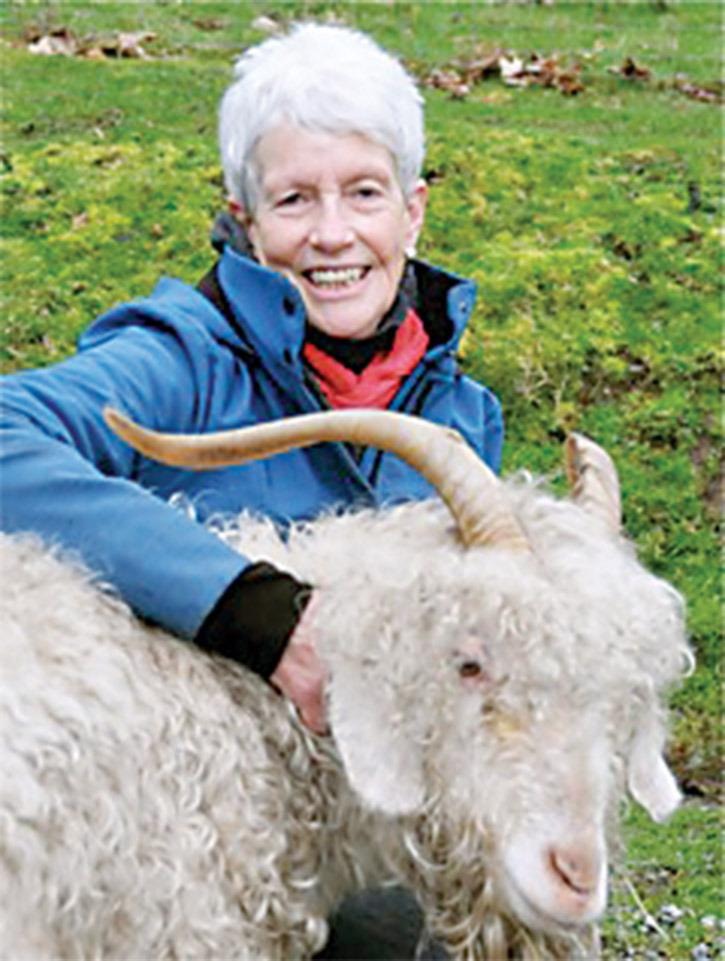Those of us living within the drainage of British Columbia’s most significant watershed will have a particular affinity for the book Fin’s Swim: 21 Days on the Fraser River by Mayne Island author Helen O’Brian.
The Fraser and its tributaries drain a quarter of the province and provide a living conduit between the Pacific Ocean and the myriad sources that make up this river system.
Essentially the ecological health of the Fraser and well being of this great swath of the province go hand in hand.
O’Brian says Fin Donnelly swam the length of the Fraser River twice, from Tete Jaune Cache to its mouth in 1995 and 2000, to draw attention to the vulnerability and precarious state of the river.
However, she felt the events weren’t sufficiently well documented. With Fin’s Swim, O’Brian has done something about that and more.
The author says she got inspired to write the book, geared to intermediate learners and up, when she spent five wet days on the Middle Fraser in 2004 travelling with a group of academics from Soda Creek to Big Bar Ranch.
On that trip she says memories of her favourite childhood book, Paddle-to-the-Sea kept coming back to her.
In Paddle-to-the-Sea, author Holling Clancy Holling takes the reader on an epic journey through all five Great Lakes, down the St. Lawrence River to the Atlantic Ocean from the perspective of a toy canoe set adrift from the tip of Lake Superior. She says the reader is introduced to the minutiae of habitats and ecosystems that make up the great waterway.
She felt inspired to do the same thing for the Fraser, using Fin Donnelly’s swim as an anchor point to tell about the Fraser. “I was hoping he might be the equivalent of the little carved canoe in Paddle-to-the-Sea.”
O’Brian contacted Fin after her five-day river experience, says not only was his response enthusiastic, but he invited her to join him the following summer on the Rivershed Society’s Sustainable Living Leadership Program for young people. “Together we traveled by kayak, raft and canoe from Tete Jaune Cache to Jericho Beach,” she says.
O’Brian says when environmental swimmer Fin Donnelly first embarked on his swimming marathon down the Fraser in 1995, he was 29 years old. Her book Fin’s Swim draws from Donnelly’s journal notes from that trip as well as from her own experiences with the Rivershed Society group in 2005.
“The book was a long time coming,” admits O’Brian, a celebrated storyteller and former director of the Vancouver Storytelling Festival.
She says Fin Donnelly’s quest was for the health of the Fraser, not his personal glory.
She inserted lots of factual information about the river and historic events that have occurred along the watercourse over the centuries.
She colours the narrative with several sidebars excerpts from Simon Fraser’s 1808 journal, and speaks of the pictographs and petroglyphs found on rock faces along the way.
She uses artistic license to describe the harrowing misdeed of the colonial government in the trial and hanging of five Tsilhqot’in war chiefs in 1864, beside the river at Quesnel.
She talks of other calamities like train wrecks of twisted metal still evident at the base of canyon walls further downstream.
She tours you through a native fishing camp at the mouth of the Bridge River where you can almost taste the delight of smoke-dried sockeye. She speaks of the legend of sasquatch through the mist-laden lower canyons.
O’Brian reflects on the devastation to the river that did not happen, that would have snuffed out all the salmon runs north of Lillooet. In the 1950s the provincial government contemplated the Moran Dam that would have created a lake 150 miles long and generated more power than the Grand Coulee and Hoover Dam combined. In 1972 this plan was shelved, hopefully forever.
O’Brian breaks the book into three sections as depicted by the Z-shape of the Fraser itself.
The Upper Fraser from Tete Jaune to Prince George, the Middle Fraser from Prince George to Hope, and the Lower Fraser from Hope to Jericho Beach.
She begins the book with a quote from Fin Donnelly. “One could argue that, like the pioneers of Canada, I conquered the river by swimming it – that I beat it, controlled it and overcame it. But that’s not how I look at it at all. I swam with the river – I learned to work with it, using its characteristics and nature to my advantage....”
O’Brian concludes she got to experience the many different flavours and moods of the Fraser.
“I discovered the wonders of the Upper Fraser and could feel the power of the river increasing as it received the water from its tributaries.”
She says the zones changed dramatically as they moved through the geology, topography and climatic differences.
“I liken the differences in the river to the movements of a symphony, from the peaceful serenity of wilderness and solitude in the upper reaches to the crescendo in the lower urban section that is so busy.”
O’Brian is holding a special book launch and reading in Williams Lake on Thursday evening, May 30 at 7 p.m. at Scout Island Nature Centre. She has a short eight-minute video clip about the Fraser she will show along with reading and telling stories from the book. Don’t forget, she is a storyteller.
One of the highlights that accents Fin’s Swim is the collection of illustrations throughout book by artist Debbie Bowles.
Fin’s Swim will be available at local retail book outlets. For more information about the book and the author, checkout the website www.finsswim.ca.
